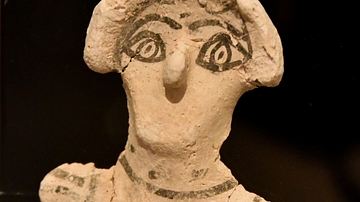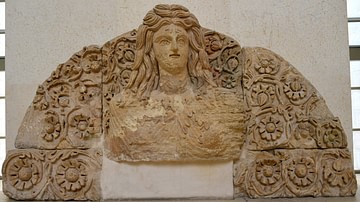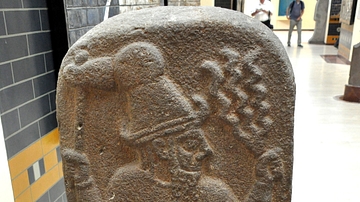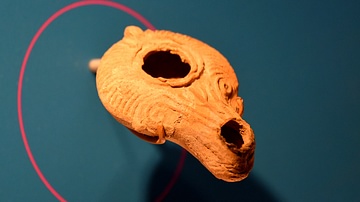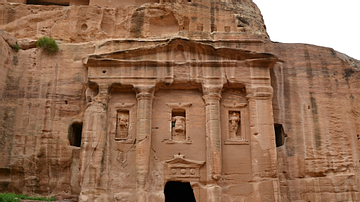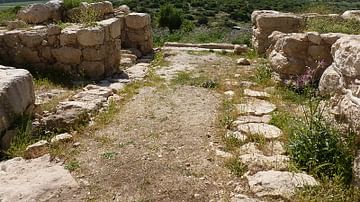Illustration
Atarghatis is seated on a throne and a large head of the bearded Hadad, sculpted in limestone in the Oriental Syrian style, is beside her. Both came from a group of sculptures that decorated and adorned the Nabataean temple at Khirbet et-Tannur. Atarghatis was the Syrian goddess of plants and fertility, while her consort Hadad was the god of storms and rain, and therefore responsible for the germination of her plants. Thus, they were protectors of life and growth for the Levantine agricultural communities. Nabataean, around 100 CE. From Khirebt et-Tannur, north of Tafila, Jordan. (The Jordan Museum, Amman, Jordan).
About the Author
Cite This Work
APA Style
Amin, O. S. M. (2019, February 18). Atarghatis and Hadad from Khirbet et-Tannur. World History Encyclopedia. Retrieved from https://www.worldhistory.org/image/10095/atarghatis-and-hadad-from-khirbet-et-tannur/
Chicago Style
Amin, Osama Shukir Muhammed. "Atarghatis and Hadad from Khirbet et-Tannur." World History Encyclopedia. Last modified February 18, 2019. https://www.worldhistory.org/image/10095/atarghatis-and-hadad-from-khirbet-et-tannur/.
MLA Style
Amin, Osama Shukir Muhammed. "Atarghatis and Hadad from Khirbet et-Tannur." World History Encyclopedia. World History Encyclopedia, 18 Feb 2019. Web. 01 Apr 2025.



